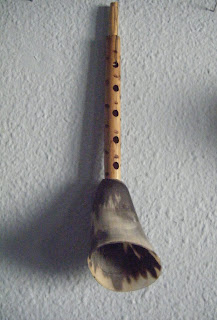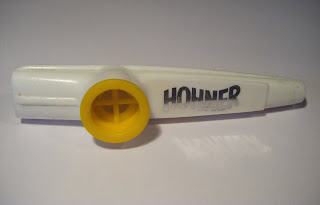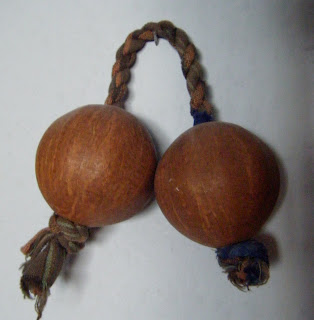(chop on text above)
Music is organized sound. Virtually all cultures have used the powers of music for therapeutic purposes. For hundreds of years, the role of music became a hobby . Only recently the use of sound and music reappeared as a valuable healing mode in our western culture.
.
Our bodies are genetically programmed to be instruments of self-healing if given a chance. Some music helping the body heal into the natural state of balance and harmony. The common denominator in most approaches recognize that the body heals itself most effectively in a state of deep relaxation.
Use music to evoke the "relaxation response" is one of the simplest and most effective of all, but you must choose the right music.
Adama Group created with the intention of using music as a conductor cable in which therapy is sought relaxation, balance and well being of all attendees. For this you can choose to make different sessions, with variety of music and exercise.
-BIOENERGETICS SESSION: In these sessions we will work with the pure sound of our own voice that will bring the sound-vibration of certain parts of the body.
will perform different exercises that energy in our bodies energized by connecting with our body.
implement various body language exercises, getting carried away by the music, listening to our body, being aware that movements make us feel better, not choreographed, allowing himself to be our guide, flowing with the moment and freeing negative emotional load. ( In this exercise you blindfolded the audience, if the room allows) this way is more convenient to get carried away by the music. We will
different energy exercises in pairs or groups to work the personal connection from a deeper perspective.
Finally there will be a relaxation of quartz bowls, didgeridoo, Gong .... in which travel with the vibration and sound of these beautiful instruments (provided that the possibilities of the hall permit, the relaxation will take place with participants lying).
music shall we use our own compositions, which have been carefully created to help connect with the purpose of the meeting.
therapy sessions with chanting of Mantras:
This session is designed to also carry out exercises of bioenergetics, the wizard
have the opportunity to enjoy a concert of mantras (sacred chants that are used in Differents parts of the world) we use it mainly belong to cultures Hindu, Buddhist and Tibetan. Mantras for themselves and have a vibrancy and energy of its own, this coupled with the benefits of all known music and creates a balanced environment of peace, serenity, joy and prosperity.
addition to the concert in if you sing, dance and enjoy the present moment all connected to the depths of our being in the here and now, will remain Biodanza parts or body language, any exercise of bioenergetics and of course the part of the relaxation quartz bowls and other instruments ....
KUNDALINI YOGA SESSION: This session has been created with meditations, exercises and chanting of mantras of Kundalini Yoga unique.
expression in the body and Biodanza is incorporated basic elements of Bhangra dance discipline used in Kundalini Yoga to balance, harmonize and achieve higher welfare practitioners. Relaxation end as in other formats will be made with the bowls and other instruments.
MANTRAS CONCERTS AND BOWLS OF QUARTZ.
course for those who simply want to attend a concert, there is the possibility of Mantras dates or quartz bowls.
addition to our group therapy, individual therapy also do Reiki, quartz bowls, Pythagorean tuning forks and other instruments.
For any of our services please contact us at our email grupoadama@gmail.com.
Thanks for your time! Namaste
The instruments used are: -
BOWLS Set of 7 QUARTZ
Through the pure crystal tones as the sound affects the brain wave activity, you can reach an altered state of consciousness . As affected different parts of the brain, it is likely that the release of various hormones and neuro-chemical can suppress pain, strengthen the will, bring out the creativity and help us overcome addictions.
When recording the waves produced by singing bowls. can observe that among the different wave patterns had a wave pattern equivalent to the alpha waves produced by the brain ".
This type of wave is between the 7.5 and 13 Hz and mental status on which would correspond to relaxation, tranquility, creativity start full activity of the left hemisphere and right hemisphere disconnection
The sound passes through the entire body vibrating all the cells which also have their internal microchip, which was excited to enter into resonance if the right frequency, and each group of cells has its own resonant frequency. At the same time we encourage all water molecules in the body, over 70% of our body is water.
When recording the waves produced by singing bowls. can observe that among the different wave patterns had a wave pattern equivalent to the alpha waves produced by the brain ".
This type of wave is between the 7.5 and 13 Hz and mental status on which would correspond to relaxation, tranquility, creativity start full activity of the left hemisphere and right hemisphere disconnection
The sound passes through the entire body vibrating all the cells which also have their internal microchip, which was excited to enter into resonance if the right frequency, and each group of cells has its own resonant frequency. At the same time we encourage all water molecules in the body, over 70% of our body is water.
The gong is a percussion instrument. This is a large metal disk (usually brass) with curved edges (usually inward), which is struck with a mallet.
Their sound is very rich harmonics. At its heart is its meditative beat, deep and mysterious, while in its middle part is the expansionary shock.
The gong is used to start the session and help to further opening the audience's energy, frees us from the old, we open the present and active ecstatic energy.
1 DRUM DIAMETER 45 CM OCEANIC AND RAIN STICK
THailand home Instruments that simulate waves and raindrops, respectively ..
Both instruments help us better obterner respiratory flow and balance mental and emotional.
produces a sharp and intense sound that can last a long period of time, vibrating in the higher parts of the body (especially in the whole area of \u200b\u200bthe brain and upper crown).
We encourage meditation, help reposition the subtle bodies and act on our Seventh Chakra.
We encourage meditation, help reposition the subtle bodies and act on our Seventh Chakra.
1DIDGERIDOO
Possibly the oldest instrument the earth is said to have about 40000 years old. The Australian Aborigines use it for parties, celebrations, rituals and as a healing tool to various diseases. Acts in the first chakra, energizes and connects us to earth.
guitars, keyboards and samplers.
This type of instrument and more familiar to most of us will be responsible for creating the appropriate environment and atmosphere for every moment of the session.
This type of instrument and more familiar to most of us will be responsible for creating the appropriate environment and atmosphere for every moment of the session.
AND LOVING AND WARM VOICE OF CARMEN IGLESIAS (The female voice activated our imagination and visualization and gives us the spiritual connection)











































































































